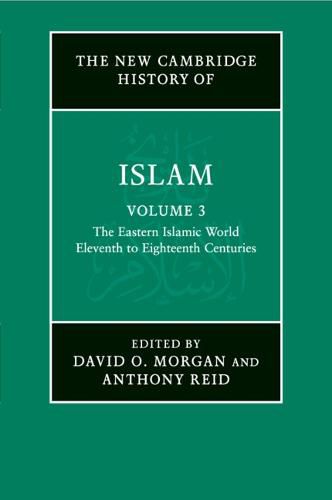Readings Newsletter
Become a Readings Member to make your shopping experience even easier.
Sign in or sign up for free!
You’re not far away from qualifying for FREE standard shipping within Australia
You’ve qualified for FREE standard shipping within Australia
The cart is loading…






This volume traces the second great expansion of the Islamic world eastwards from the eleventh century to the eighteenth. As the faith crossed cultural boundaries, the trader and the mystic became as important as the soldier and the administrator. Distinctive Islamic idioms began to emerge from other great linguistic traditions apart from Arabic, especially in Turkish, Persian, Urdu, Swahili, Malay and Chinese. The Islamic world transformed and absorbed new influences. As the essays in this collection demonstrate, three major features distinguish the time and place from both earlier and modern experiences of Islam. Firstly, the steppe tribal peoples of central Asia had a decisive impact on the Islamic lands. Secondly, Islam expanded along the trade routes of the Indian Ocean and the South China Sea. Thirdly, Islam interacted with Asian spirituality, including Hinduism, Sikhism, Buddhism, Taoism and Shamanism. It was during this period that Islam became a truly world religion.
$9.00 standard shipping within Australia
FREE standard shipping within Australia for orders over $100.00
Express & International shipping calculated at checkout
This volume traces the second great expansion of the Islamic world eastwards from the eleventh century to the eighteenth. As the faith crossed cultural boundaries, the trader and the mystic became as important as the soldier and the administrator. Distinctive Islamic idioms began to emerge from other great linguistic traditions apart from Arabic, especially in Turkish, Persian, Urdu, Swahili, Malay and Chinese. The Islamic world transformed and absorbed new influences. As the essays in this collection demonstrate, three major features distinguish the time and place from both earlier and modern experiences of Islam. Firstly, the steppe tribal peoples of central Asia had a decisive impact on the Islamic lands. Secondly, Islam expanded along the trade routes of the Indian Ocean and the South China Sea. Thirdly, Islam interacted with Asian spirituality, including Hinduism, Sikhism, Buddhism, Taoism and Shamanism. It was during this period that Islam became a truly world religion.